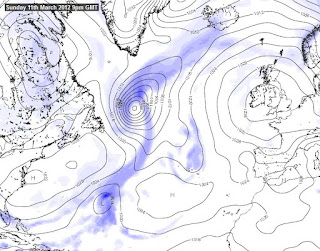How much fish can an osprey lift?
(Warning: may contain
mathematics. Do not try this at home!)
Could
YOU lift yourself up to chin level on a horizontal gym bar, with a
domestic washing machine tied to your ankles?
No, me neither.
During the 2012 breeding season, Dyfi osprey “Monty” brought several hundred fish back to his nest. All were of good size and some were very big, including this monster mullet which must have weighed almost as much as himself.[1]
No, me neither.
During the 2012 breeding season, Dyfi osprey “Monty” brought several hundred fish back to his nest. All were of good size and some were very big, including this monster mullet which must have weighed almost as much as himself.[1]
It set me thinking: how
much weight could an osprey like Monty lift? Sometimes, ospreys can
snatch their prey at the surface without diving, but not always. In
the worst case, he would have to drag it straight up out of the water
after capture, so there would be no contribution from aerodynamic
lift in forward flight. Instead, the initial lift all depends on one
single wing flap to get the fish (and himself) clear of the water. I
decided to work out the numbers...
During his nesting work
at Cors Dyfi, Monty has been too busy to be measured, which is
understandable. I took average figures for (male) wing length and
chord of 67.5cm and 45 cm respectively. The displacement lifting
power of a bird's wing during takeoff is given by the formulae:-
… where r is the wing
length, w is the chord, n is the number of wings, θ
is the angle of flap (see below), p is the density of air (taken as
1.225kgm³),
and g is the force due to gravity.[2]
When
taking off from water, ospreys use a “clap-and-fling” wing motion
where the wings are brought up above the back until the tips almost
touch, open the trailing edges to form a “V” shape between them,
and then throw the wings forward and down until they are horizontal.
It is believed [3] that this action generates extra initial lift
because of vortex effects at the wingtips. Assuming that this is
done on the first flap, I took a figure of 90 deg for the wing travel
angle θ.
Plugging
all these values into the formula gave an interesting result. It
suggests that a single flap of Monty's wings should be able to lift
3.87 kgs straight out of the water! If Monty himself weighs (say) 2
kg soaking wet, that confirms that he can indeed catch and bring away
a fish of almost his own body weight.
Sources:
[1]
Dyfi Osprey Project: Facebook entry 25/8/12
[2]
N.Pilkington, M.Parry, J.Bettles, I.Clarke; Special
Topics P3_6
Journ.Phys Vol 10, No 1 (2011)
[3]
Weis-Fogh
T. Quick
estimates of flight fitness in hovering animals, including novel
mechanisms for lift production. The
Journal of Experimental Biology 59,169-230,
1973






